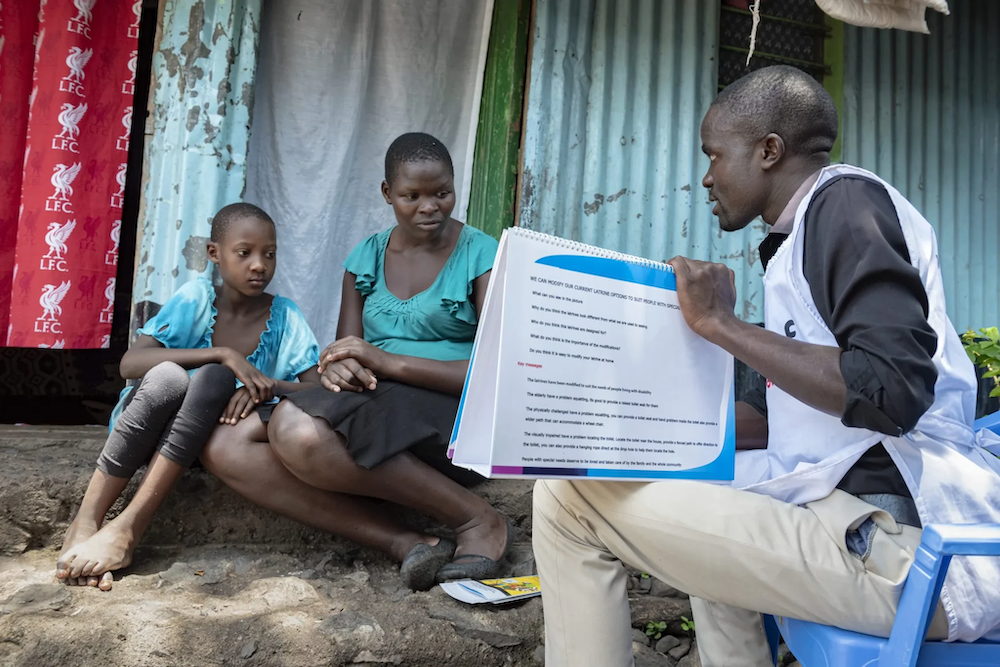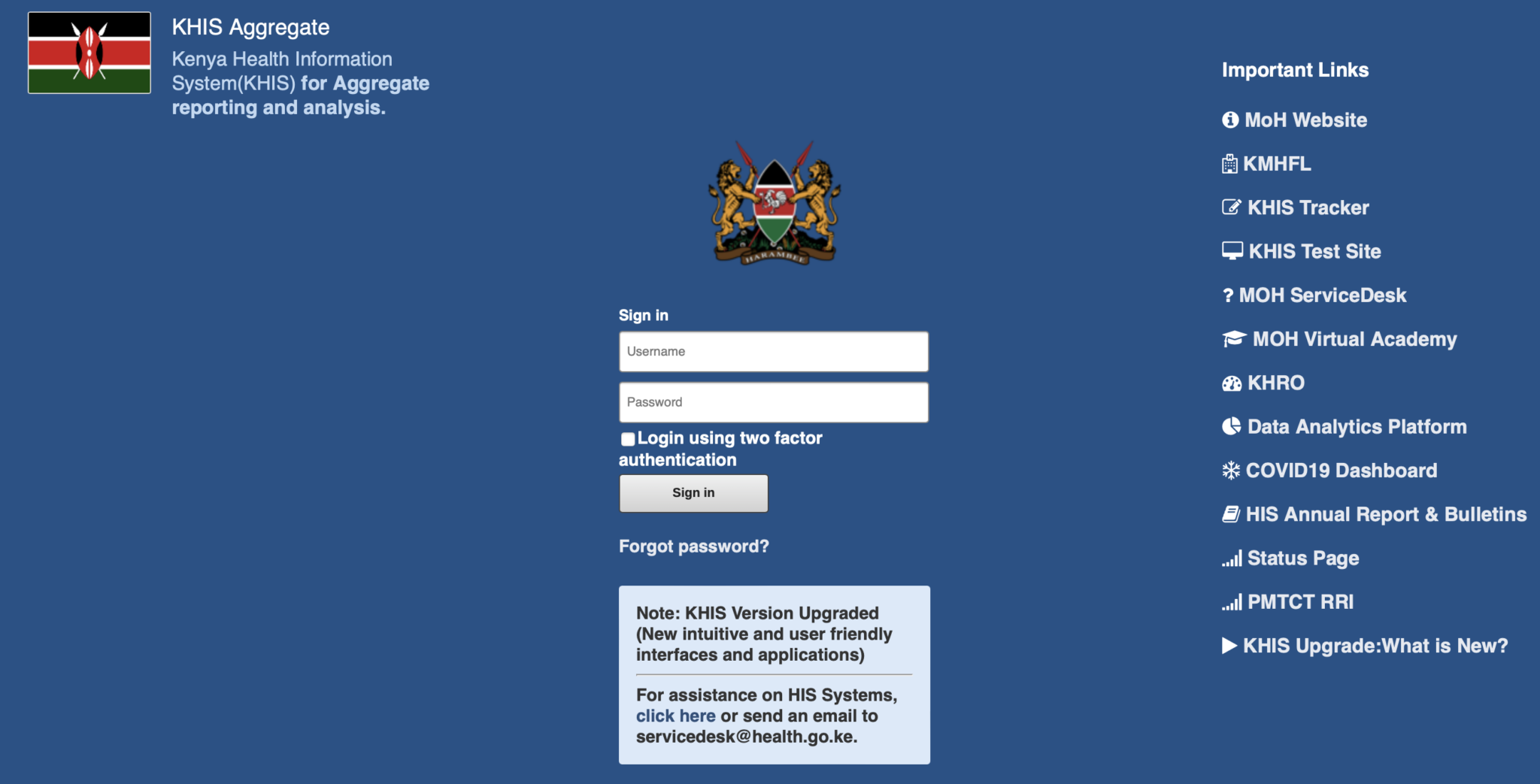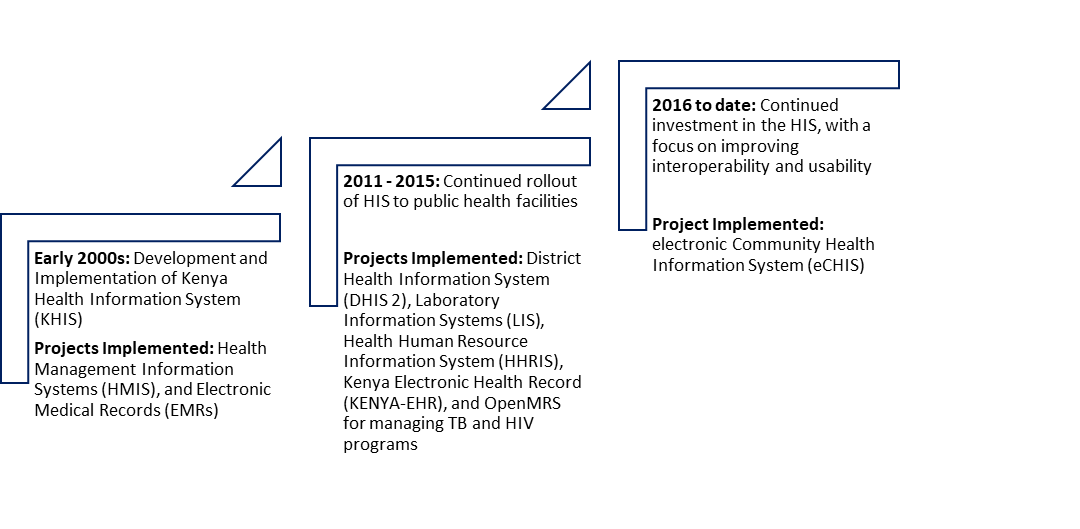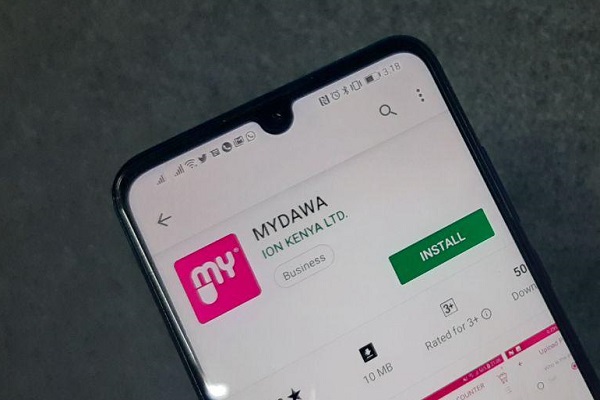
Introduction
The flow of health data in any healthcare system is a critical aspect of a country’s health information system. In Kenya, the Ministry of Health (MoH) acknowledges the significance of health data interoperability, not only from a legislative perspective but also as a provision for practical operational guidance. MoH requires a regular stream of both health and administrative data from all six levels of health facilities operating in the 47 counties, and into its Department of Health Sector Monitoring, Evaluation and Informatics. This department, in collaboration with external actors, non-State actors and public participation, ensures the healthcare system is functioning effectively to help meet the country’s goals towards achieving universal health care for its citizens by 2030.

Similar to many other countries, The Ministry of Health in Kenya adopted a Health Information System (HIS) to collect, analyse, disseminate and utilize health data and information. Though healthcare is a function of the County Government, the management and implementation of health policies and health systems remains a function of the National Government. It is therefore important for the Ministry to develop and enforce the use of systems that regularly provide health data and administrative data to support public health officials in making clinical decisions such as the distribution of healthcare resources to public health facilities.
Administrative data refers to information collected and maintained by organizations, typically government agencies or institutions, as part of their routine administrative processes. It includes data collected for non-research purposes, such as record-keeping, program management, and policy implementation. Administrative data often includes demographic information, service utilization records, billing data, and other relevant details
Current landscape
Kenya’s Health Information System has undergone significant changes over the years. It has developed from a paper-based approach to the adoption of Health Information Systems. This evolution was motivated by the need to improve patient care and improve the quality of health data which is essential for resource allocation and planning, designing health interventions and making evidence-based decisions.

In 2009, the adoption of DHIS2 for KHIS (Kenya Health Information System) marked a significant milestone. The system was officially designated as the nationwide Health Management Information System (HMIS) and became responsible for storing the country’s data repository. Consequently, efforts were focused on enhancing data collection at the facility level. This involved submitting data from manual registers to data clerks, who were tasked with uploading the information into DHIS2 on a monthly basis, ensuring a more efficient and electronic data management process. The Ministry of Health (MoH) of Kenya has therefore made significant strides to maintain a steady flow of information and statistics on the nation’s health now called the Kenya Health Information System, one of the key systems under Kenya Health Information Systems.
The government of Kenya understands this and has put up measures to ensure that health data is updated regularly. This includes the utilization of community health workers to collect data at the lowest level of data collection, the use of digital devices at point of data collection to enforce data validation and integrity even before it is processed as well as the set-up of courses for Health Information Systems under various universities in the country to improve the technical capacity. These among other strategies placed by the government have played a major role in ensuring data currency in the health system and preparing the country for future health data needs.
To understand this underlying need for regular health data updates, we have to first explore the ways through which health data affects the quality of healthcare. Regular health updates ensure high-quality and reliable data that is utilised in decision-making, efficient resource allocation (medication, hospital beds, Human Resource for Health) improve confidence in the health systems and provide reliable reports for evaluation of the impact of various health-related projects. These are the vital decisions that affect vital healthcare services, facility management and policy; which in turn affect the quality of healthcare service delivery to citizens.
Human resources for health (HRH) refers to the individuals, such as doctors, nurses, midwives, pharmacists, and other healthcare professionals, who are involved in providing healthcare services. HRH encompasses the entire workforce involved in the health sector, including those directly involved in patient care, as well as those in management, administration, and support roles.
Further, the government of Kenya has developed a Health Information System (HIS) Policy to guide the collection, quality, storage, and use of health data. The policy not only outlines the parameters of the operation of any HIS, but it also provides guidelines on data privacy and protection for all the users of the system. The Ministry is committed to protecting the personal data collected and to maintaining the trust of users and will observe the right to privacy as stipulated under the Constitution of Kenya 2010 and the Data Protection Act 2019. This is very crucial in the era of innovation that we are currently in, especially in the health sector where sensitive data is collected from users.
Also, Kenya employs a community health approach and Community Health Workers have been deployed to collect data at the lowest level. It is argued that this has proven to be economically efficient but has also created usable datasets that advise health decision-making at the lowest care.
A community consists of several villages (known as sub-locations) with a population of up to 5000 people. Each community health unit is connected to a health facility, such as a health centre or district hospital. Therefore, when discussing a community, a significant portion of the population being referred to are mothers and children. These individuals are particularly affected by the data presented in the community health scorecards.
The Kenyan government in collaboration with other organizations have committed to strengthening the Health Information Systems. The government has also undertaken efforts to strengthen the health system, including improving access to management training courses to enhance the delivery of health services at the county level. The Kenya Health Data Collaborative serves as a framework for guiding partners in aligning their health data initiatives with KHIS.
The Prevailing Gaps
Despite these initiatives the country has implemented to streamline the flow and use of health data, it remains riddled with challenges that hinder the efforts, however noble and feasible they may be.
Resource allocation, for instance, affects the logistics of medication and medical equipment logistics drug shipping within the country. However, in cases where data collection software is not utilised well, it could result in mistakes which can affect life data inaccuracies. For example, in 2020, Reuters reported that a CT scanner delivered to a county hospital (that raised hopes for local diagnosis of sick patients who had to travel long distances) remained unused 9 months later due to the lack of radiologists at the hospital; this was the pattern in many hospitals in Kenya that saw a lot of high-tech machines remain idle and unused; further worsening the country’s debt burden due to diverted resources from essential healthcare, which could have been used to save lives.
Also, in a study conducted in 2017, the completeness of data in the District Health Information Software (DHIS2 based) was reviewed from 2011 to 2015 with the finding that lack of timely and inaccurate data greatly affected the supply of anti-malaria medication due to low reporting across all malaria indicators.
Although there may be regular collection and updating of data, there are still significant gaps in the utilization of that data, particularly at lower-level healthcare facilities. Despite the effort put into data collection, there is a need to ensure that the collected data is effectively utilized for decision-making and improving healthcare services. Bridging this gap requires strengthening the capacity of healthcare personnel at all levels to interpret and apply the data in their daily practices. By promoting a culture of data-driven decision-making and providing appropriate training and support, healthcare facilities can maximize the value of collected data and drive positive changes in patient care and health outcomes.
Conclusion
The need for regular data updates is not in question; and admittedly, Kenya has made great strides in public health in this particular area. While there may be data collection mechanisms in place, the effective utilization of that data to drive meaningful action remains a significant hurdle. At the community and lower-level healthcare facilities, there is often a lack of capacity and resources to analyze and interpret the data collected. This hinders the ability of healthcare providers to make informed decisions and implement targeted interventions based on data insights. Without proper data analysis and utilization, the potential for improving patient care and health outcomes is greatly diminished. It is crucial for Kenya and other countries facing similar obstacles to continue their efforts to not just enhance the quality of health data but also promote decision-making and use of such data so that they can make more informed decisions, and allocate resources more efficiently.
This post was written by Roy Waswa, a designer currently taking part in a project called NoAppForThis, an action research project by Wellcome Trust, implemented across 3 countries (Kenya, Uganda, and South Africa) by the Open Institute, CIPESA, and CEHURD, working in collaboration with the of University of Warwick in the UK, University of Nairobi, and University of Witwatersrand in South Africa.
Follow us on Telegram, Twitter, and Facebook, or subscribe to our weekly newsletter to ensure you don’t miss out on any future updates. Send tips to info@techtrendske.co.ke



